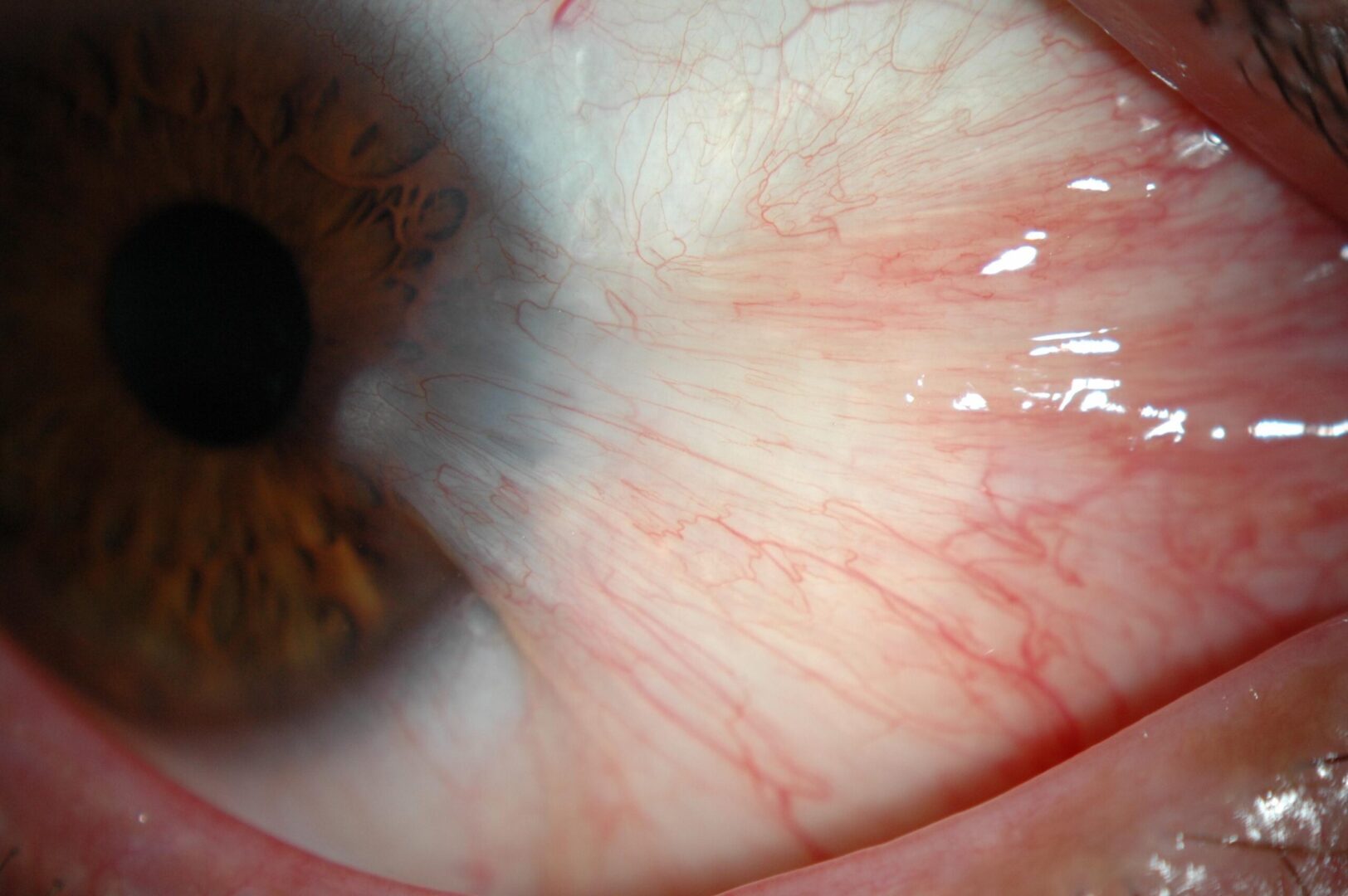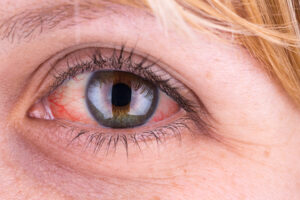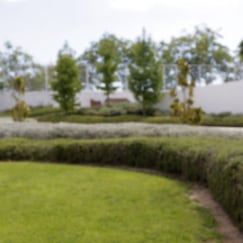Eye diseases
Pterygium

What is pterygium?
Pterygium is an overgrowth of the conjunctiva (membrane that covers the sclera, the white part of the eyeball) in such a way that it “invades” the cornea (transparent layer that acts as the front lens of the eye). It tends to be triangular in shape and usually occurs in the nasal area or inside the eye, although it can also affect the temporal area or both.
Although it is a benign lesion, its gradual growth can cause it to get large enough to interfere with vision.
Symptoms
Causes and risk factors
Treatment
Especially in the early stages, pterygium may go unnoticed, and you may not notice anything. However, as it develops, becomes inflamed or the adjacent cornea dries out due to poor tear film distribution.
A burning sensation is also frequent, as well as the loss of visual acuity, when the invasion of tissue alters the curvature of the cornea, hence causing astigmatism, or even partially or totally covers the visual axis.



